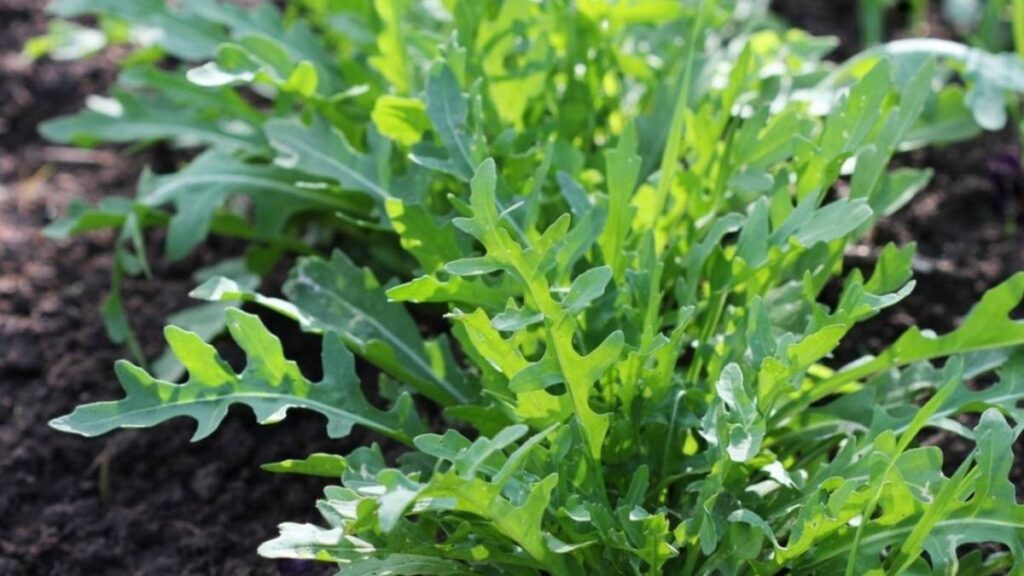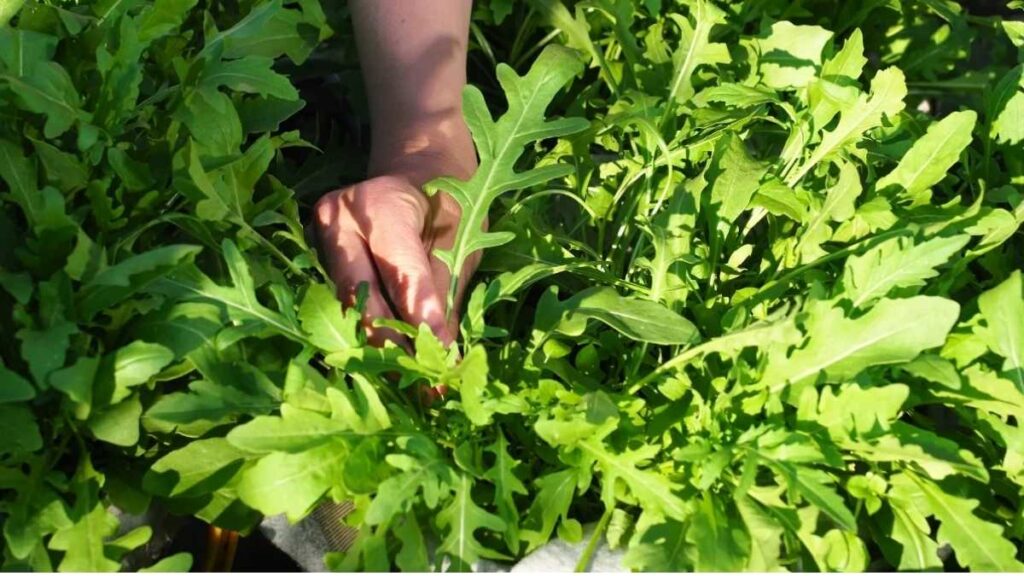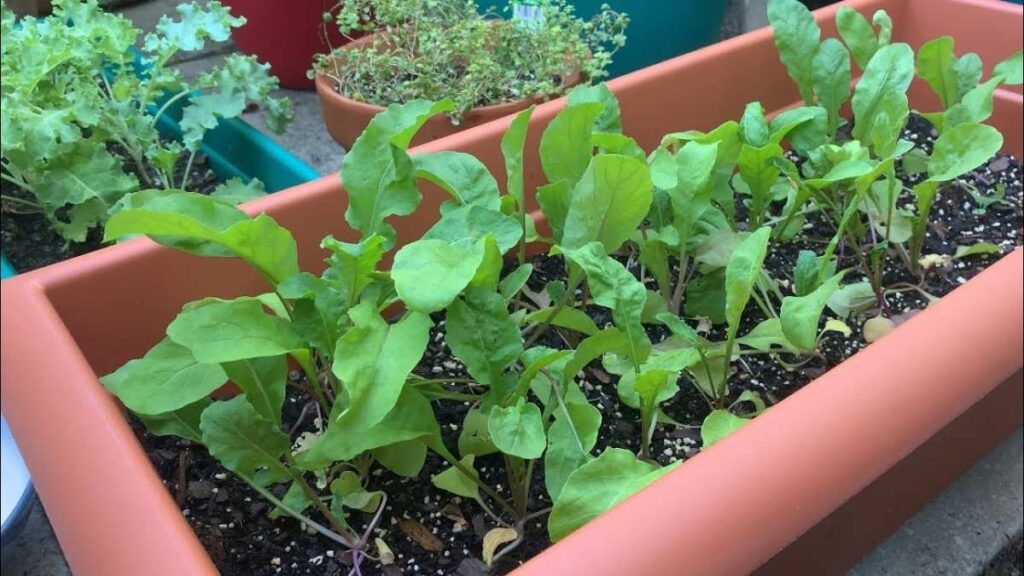Arugula is one of the easiest leafy greens you can grow at home. Its peppery flavor, fast growth, and ability to thrive in small spaces make it perfect for beginners and seasoned gardeners alike. Whether you’re planting in a backyard bed, on a balcony, or in a simple pot near a sunny window, arugula rewards you with crisp, vibrant leaves in just a few weeks. This guide explains how to plant, care for, and harvest arugula so you can enjoy fresh greens anytime.
Understanding Arugula and Why It’s Worth Growing

Arugula, also known as rocket, is a cool-season leafy green that grows quickly and adapts well to different climates. It prefers mild temperatures but can handle light frost, making it ideal for spring and fall planting. Many gardeners love arugula not only for its flavor but also for how little effort it requires.
It’s a great crop for anyone who wants quick results. Unlike other greens that may take months to mature, arugula can be harvested in as little as three to four weeks. It also continues to grow after cutting, giving you multiple harvests from the same plant.
Choosing the Right Spot for Planting
Arugula grows best in full sun, but it tolerates partial shade, especially in warmer climates. If you live in a hot region, choosing a spot that gets morning sun and afternoon shade helps prevent the leaves from turning bitter.
Well-draining soil is important. Arugula doesn’t like sitting in soggy conditions, so if your garden tends to hold water, consider planting in raised beds or containers. Container gardening is an excellent option for small spaces, and even a pot as small as eight inches wide can support a healthy batch of greens.
Preparing the Soil for Healthy Growth
Before sowing seeds, loosen the soil and mix in compost or any organic matter you have available. Arugula thrives in nutrient-rich, slightly moist soil that allows roots to spread easily. Aim for soil that’s crumbly and easy to work with.
If you are planting in pots, use a good quality potting mix rather than garden soil. Potting mixes drain better and encourage faster growth. Make sure the container has drainage holes to prevent water from collecting at the bottom.
Planting Arugula Seeds

Arugula seeds are tiny but very simple to sow. Scatter them lightly across the soil surface and cover them with a thin layer of soil, no more than a quarter inch deep. You don’t need to worry about spacing too precisely because you can thin the seedlings later.
Water the area gently so the seeds stay in place. Keep the soil evenly moist until the seeds sprout, which usually takes only four to seven days. Once sprouts appear, thin them out so each plant has a bit of space to grow. Leaving about three to four inches between plants helps them develop nicely without crowding.
Watering and Ongoing Care
Arugula needs consistent moisture to stay tender and flavorful. Water it regularly, especially during warm or windy days when the soil dries out faster. The goal is to keep the soil damp but not soaked. If the leaves start drooping, that’s usually a sign the plant needs water.
Mulching around the plants helps the soil retain moisture and keeps the temperature stable. A thin layer of straw, dry leaves, or any organic mulch works well. Mulch also helps reduce weeds so the arugula plants can grow without competition.
If you’re growing arugula in containers, check them daily, as potted soil tends to dry faster. A light feeding with a mild liquid fertilizer every couple of weeks can encourage lush growth, though many gardeners grow arugula successfully without additional fertilizer if the soil is already rich.
Protecting Arugula from Heat and Pests

Arugula grows best in cooler weather. If temperatures climb too high, the plant may bolt, meaning it sends up a flower stalk and the leaves become bitter. To prevent this, provide shade during the hottest part of the day or plant in a spot that naturally stays cooler.
Common pests include flea beetles and aphids. Flea beetles create tiny holes in the leaves, while aphids cluster around stems and new growth. You can discourage pests by covering plants with a light garden fabric, practicing crop rotation, or gently spraying leaves with water to remove insects. Healthy soil and consistent watering also make plants more resilient.
Harvesting for the Best Flavor

Arugula tastes best when harvested young. You can begin picking leaves when they reach three to four inches long. Simply snip the outer leaves and allow the center of the plant to keep producing. This method, called cut-and-come-again, gives you a continuous supply of fresh greens for weeks.
If you prefer to harvest the entire plant at once, wait until it reaches about six to eight inches tall. Pull the whole plant gently from the soil or cut it off at the base. New growth may still appear, though not as vigorously as when harvesting individual leaves.
For the freshest taste, harvest in the early morning when the leaves are crisp and full of moisture. Use the greens right away or store them loosely wrapped in the refrigerator for a few days.
Growing Arugula Indoors

If you don’t have outdoor space, arugula grows well indoors near a sunny window. Choose a container with drainage holes and fill it with potting mix. Sow seeds just as you would outdoors, keep the soil moist, and ensure the plants get at least four to six hours of sunlight daily. You can also use a simple grow light if natural light is limited.
Indoor arugula grows quickly and makes a convenient option for fresh salads whenever you need them. Just rotate the pot occasionally to help the plants grow evenly.
Enjoying Your Homegrown Greens
Arugula adds a lively, peppery kick to salads, sandwiches, pizzas, pasta dishes, and more. Its fresh taste pairs well with lemon, olive oil, tomatoes, and soft cheeses. Because arugula grows so quickly, you can keep planting new batches every couple of weeks for a steady supply throughout the cooler months.
Growing arugula is a rewarding experience, even for beginners. With minimal effort, you can enjoy crisp, flavorful greens straight from your garden or windowsill. By choosing the right spot, keeping the soil moist, and harvesting regularly, you’ll have a thriving patch of arugula that keeps giving season after season.
Final Thoughts
Arugula is one of those plants that quietly wins you over. It doesn’t demand much and yet delivers a burst of fresh flavor that instantly elevates any meal. Whether you grow it outdoors or in a simple pot inside, the ease and speed of its growth make it a satisfying choice for anyone wanting to add more homegrown produce to their routine.
Its resilience, fast harvest time, and ability to keep producing make it an ideal leafy green for beginners. Once you grow your own arugula and taste its fresh, peppery leaves, it’s hard to go back to store-bought greens. With just a little care and attention, you can enjoy its vibrant flavor throughout the season.



